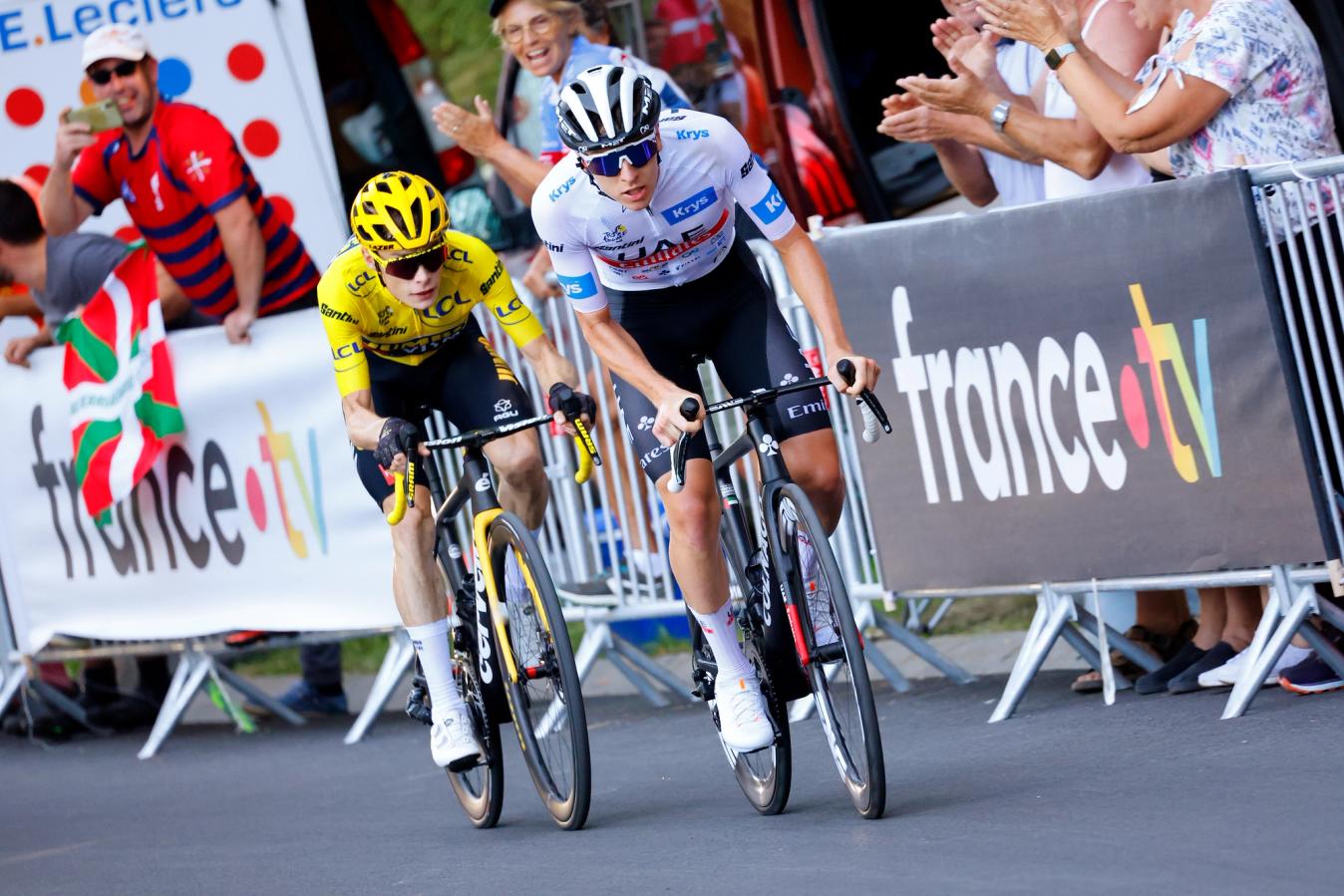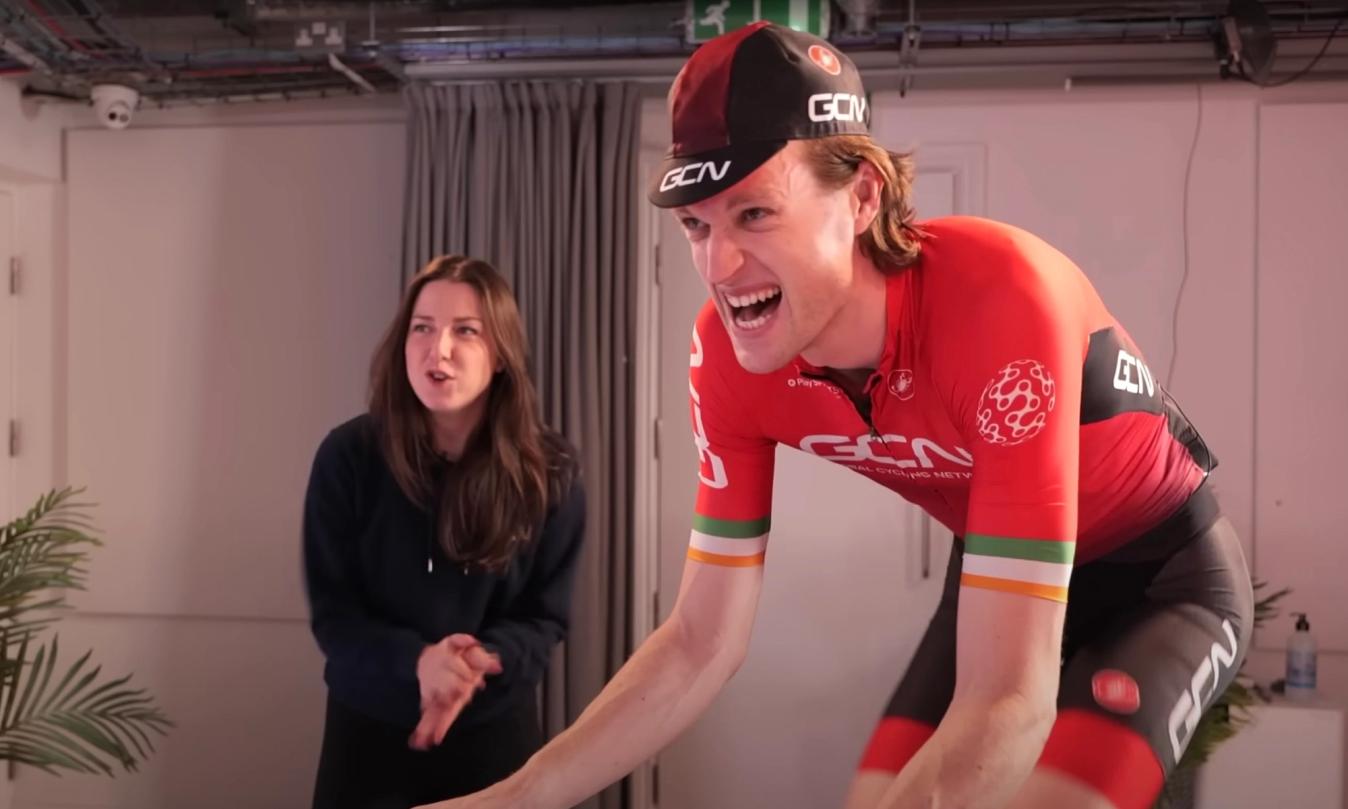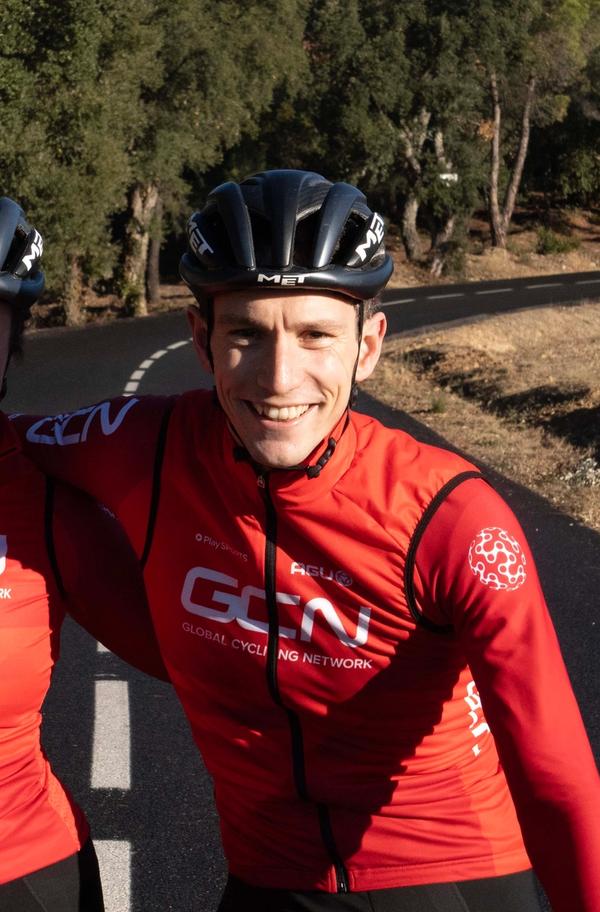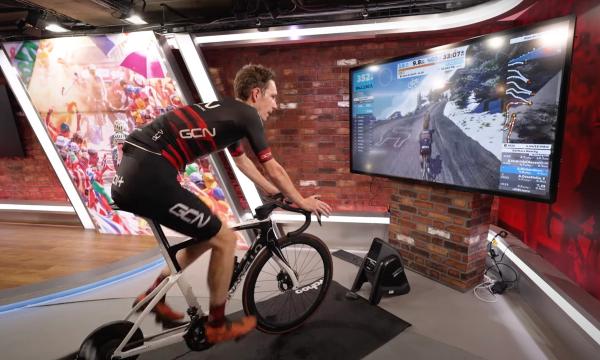Is power-to-weight ratio important for indoor training?
Keeping track of this metric is arguably just as important when riding inside on a smart trainer as it is on the open road
Alex Hunt
Junior Tech Writer
The ratio between the power you produce and the weight of your body is a relationship that is as old as cycling. The more power you produce at any given weight, the faster you will be able to ride up hills, so the benefits of a higher ratio on the road are clear. But can this also be useful when we head indoors and onto the smart trainer?
Here's why you shouldn't forget about power-to-weight ratio when you hibernate indoors for a winter of turbo training.
What is power-to-weight ratio?
The unit often used when discussing a rider’s power-to-weight ratio is watts per kilo, or W/kg. This is frequently bandied around in pro cycling circles as this number can be a good indication of how well a rider will be able to perform when the road points up.
The best of the best, such as Tadej Pogačar and Jonas Vingegaard, are capable of riding at close to 7W/kg for 20 minutes. This is simply a superhuman output and anything over 6W/kg would have you lining up as a genuine contender in most WorldTour races.

© Velo Collection (TDW) / Getty Images
The best in the world are capable of sustaining eye-watering power-to-weight ratios on long alpine climbs
The use of power-to-weight is not solely the reserve of WorldTour professionals, though, and in fact it can be a very important metric to understand if you spend a lot of time on a smart trainer.
Virtual training platforms such as Zwift or Rouvy use your physical metrics such as your height and weight to provide an accurate riding experience. When you are prompted to input your weight, this is half of the equation for your power-to-weight ratio. The other half is determined by the power output you produce whilst riding - often this is based around your functional threshold power (FTP).
To get your power-to-weight figure you simply divide the power you are riding at by your weight. Even simpler, most virtual training platforms will display your W/kg on the screen as you ride.
Why do I need to care about W/kg whilst I’m indoor training?
It can be odd to think that a metric so closely related to climbing is relevant whilst pedalling in your living room, but understanding power-to-weight ratio is key to getting the most out of your training.
The most notable area where a need to understand power-to-weight comes in is when you're participating in a virtual race. To make these races fair and to give everyone an equal experience of competition, races are often split into different categories. These categories are based on your power-to-weight ratio at your FTP.
To find out what this is, you need to conduct an FTP test as well as accurately weighing yourself. From here you can either do the calculation yourself or let the training software do it for you. Once you have your FTP in W/kg you will be able to enter the correct category race to be competitive.

© GCN
If you are looking to compete in virtual racing, having an accurate understanding of your power-to-weight ratio is crucial
Keeping an eye on your power-to-weight whilst indoor training will also allow you to have the most realistic riding experience possible. As you train and get stronger and your power output goes up, your power-to-weight ratio will also increase. However, what typically comes with increased training is a decrease in body weight. This is natural as the more we train the more likely we are to lose some excess body weight. If you do not update your rider profile to account for this change in weight, your power-to-weight will be displayed incorrectly and it will affect the riding experience.
This goes beyond racing and can have a noticeable effect on all aspects of virtual riding. If you do not keep your rider weight up to date the resistance and time it takes to complete climbs in the virtual world will not be representative of your actual ability.
As your power-to-weight increases, the amount of effort it takes to ride a climb at the same pace reduces or, equally, you are capable of riding it faster. On training rides or even easy social rides, having your rider data correct will make sure that the effort you are required to put in is representative of how hard it should be.
What is the best way to keep track of my power-to-weight ratio?
Your power-to-weight ratio will vary from day to day as we all have slight fluctuations in body weight depending on external factors. To have the most reliable power-to-weight ratio, you will need to complete regular FTP tests. Completing these every six to eight weeks will allow you to map your progress from your training.
The other part of the equation is far easier to test and can therefore be done more often. When it comes to weighing yourself it is easy to become fixated on the number on the scales. In reality, it is always better to try and actively increase your power output rather than trying to reduce your weight to boost your performance numbers. As you train more you will naturally see a drop in body weight and it is not something that needs to be chased.
Weighing yourself with the same scales in the same place and at the same time is the most accurate way to record your body weight. Ideally doing it first thing in the morning before you eat or drink anything will make it easy to replicate time after time.

© Zwift
Regular FTP testing is necessary to keep track or your physical performance
If you are looking to keep the most accurate record of your power-to-weight ratio whilst training indoors, weighing yourself once a week will be more than enough. If you are less bothered by total accuracy, the intervals between weigh-ins can be extended to two or even four weeks.
Are there any training benefits to having your power-to-weight set accurately on an indoor smart trainer?
Having your power-to-weight ratio set correctly on an indoor smart trainer is essential if you are looking to get the most out of your training. As mentioned before, it is essential for fair and accurate virtual racing, but it is also important for training sessions.
A lot of training sessions are based on percentages of your FTP power-to-weight ratio. By getting this information right, you are going to make sure that you are riding in the correct zones and at the correct intensities.

© GCN
Having your power-to-weight set up correctly is going to give you the most realistic ride characteristics that will mimic riding out on the road
If you are supplementing outdoor riding with indoor riding, the best way to keep it feeling realistic is by keeping your rider data correct. Without this, your trainer will not be able to supply a resistance that feels as it should for the terrain you are riding on. This may sound pedantic, however when you jump out of the saddle and attack a small punchy climb, a lot of the pacing is based on feel rather than just number-watching. If it feels wrong, it is going to be hard to get the most out of it.
Power-to-weight is nothing new, but understanding its relevance for indoor training is key to unlocking the most out of each session you complete. Investing a little bit of time in testing and recording your weight and your power will give you all the data you need to train smarter.
Don’t forget to head over to our dedicated indoor training page where you can find out everything you would ever want to know about indoor training and getting the most out of it.













